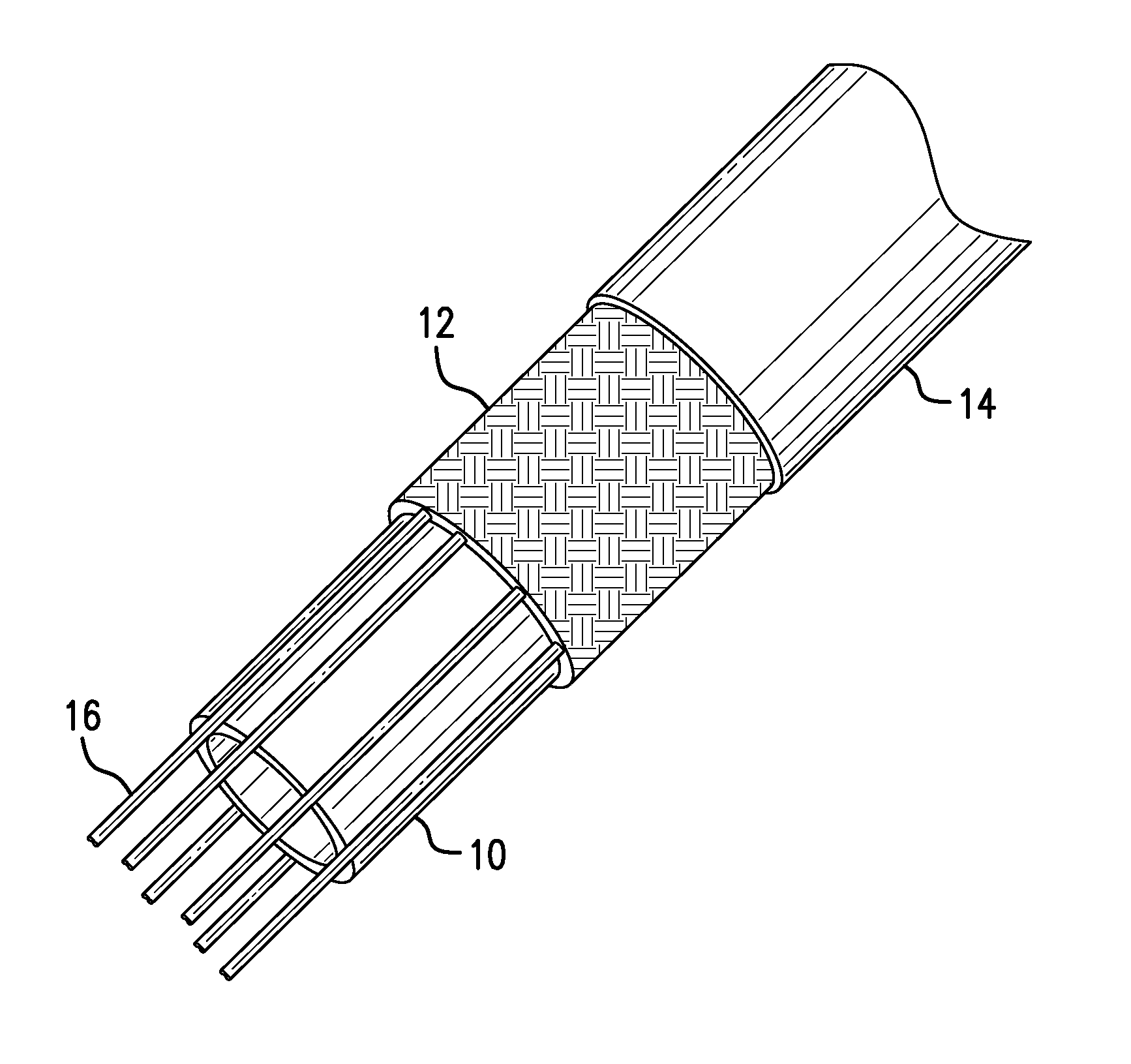High pressure highly flexible, stable in length, thermoplastic hose and method of making the same
- Summary
- Abstract
- Description
- Claims
- Application Information
AI Technical Summary
Benefits of technology
Problems solved by technology
Method used
Image
Examples
Embodiment Construction
[0029]The instant invention provides a high strength high pressure textile reinforced thermoplastic hose having a very small bend radius, and a high degree of flattening and kink resistance. Referring first to FIG. 1, a hose constructed according to the invention is a high pressure highly flexible hose that is very stable in length. Said hose is comprised of a highly flexible, thermoplastic composite inner tube 10, reinforced with one or more layers of braided or spiralized high tenacity textile yarn 12 and covered with a highly flexible thermoplastic sheath 14. As more fully described hereinafter, Incorporated underneath, between or on top of said reinforcement layer(s) 12 is one or more strands of high tenacity multifilament textile yarn that forms a layer 16. The yarns of layer 16 run parallel to the axis of the inner tube 10 and outer sheath 14. Incorporated underneath, between or on top of the inner tube 10, reinforcement layer 12 or parallel yarn layer 16 may be an adhesive th...
PUM
| Property | Measurement | Unit |
|---|---|---|
| Length | aaaaa | aaaaa |
| Time | aaaaa | aaaaa |
| Mass | aaaaa | aaaaa |
Abstract
Description
Claims
Application Information
 Login to View More
Login to View More - R&D
- Intellectual Property
- Life Sciences
- Materials
- Tech Scout
- Unparalleled Data Quality
- Higher Quality Content
- 60% Fewer Hallucinations
Browse by: Latest US Patents, China's latest patents, Technical Efficacy Thesaurus, Application Domain, Technology Topic, Popular Technical Reports.
© 2025 PatSnap. All rights reserved.Legal|Privacy policy|Modern Slavery Act Transparency Statement|Sitemap|About US| Contact US: help@patsnap.com



